The 2021 Kawasaki Z H2 SE: Supercharged Hypernaked With Extra Sauce
Contents
Boy, what a predicament the engineers found themselves in when looking at the 2021 Kawasaki lineup, they just had to add a little extra sauce somewhere. That “somewhere” was the all-new for 2021 Z H2 SE. Wait a minute, wasn’t the Z H2 already amazing enough? Of course it was, that’s why it needed just a bit extra.
How do you add any extra to the Japanese-made Hypernaked, you ask? Simple, you upgrade the braking system to the Brembo Stylema system, then include the Kawasaki Electronic Control Suspension (KECS) with Showa Skyhook technology. That’s on top of the already incredible standard equipment found on the Z H2.
No changes were made to the 998cc, liquid-cooled, supercharged, 4-stroke DOHC 16-valve in-line four engine from the Kawasaki Z H2, it churns out 200 hp at 10,500 rpm and 101 lb.-ft. of torque at 8,500 rpm.
There is definite legitimacy to Kawasaki’s claim that the Z H2 SE is the King of the Hypernakeds.
Colors for 2021 — Metallic Diablo Black / Golden Blazed Green
The 2021 Kawasaki Z H2 SE starts at $19,700 USD / $23,099 CAD.
On this page: we’ve curated specs, features, news, photos/videos, etc. so you can read up on the new 2021 Kawasaki Z H2 SE in one place.
Model Overview
General Info
- Price: $19,700 USD / $23,099 CAD
- Key Features:
-
- NEW Kawasaki Electronic Control Suspensions (KECS) with Showa Skyhook EERA Technology
- NEW Brembo® Stylema Front Calipers
- Stainless Steel Braided Brake Lines
- Integrated Riding Modes
- Smartphone Connectivity via RIDEOLOGY THE APP
Main Specs
- Engine: 4-stroke, In-Line Four, DOHC, 16-valve, liquid-cooled
- Power: 104.5kW (200hp)@10,500 RPM
- Torque: 101 lb-ft (111 NM) @ 8,500 RPM
- Wet Weight: 240 kg (529 lb)
- Seat Height: 830 mm (32.7 in)
2021 Kawasaki Z H2 SE Specifications
ENGINE |
||
| Engine | 998cc, 4-stroke, 4-cylinder, DOHC, 4-valve, liquid-cooled, supercharged | |
| Power | 200 hp | |
| Bore x Stroke | 76.0 x 55.0mm | |
| Compression Ratio |
11.2:1
|
|
| Fuel System | DFI, 40mm Throttle Bodies | |
| Starter | Electric | |
| Lubrication | ||
DRIVETRAIN |
||
| Clutch | ||
| Transmission | 6-speed dog-ring, return shift | |
| Final Drive | Sealed chain | |
CHASSIS |
||
| Suspension Front | Showa SFF-BP Fork with Adjustable Compression and Rebound Damping, Spring Preload Adjustability | |
| Suspension Rear | Uni-Trak®, Showa Gas-Charged Shock with Adjustable Compression and Rebound Damping, Preload Adjustability | |
| Brakes Front | Dual 320mm Disc w/Radial-mount Brembo M4.32 Calipers, KIBS | |
| Brakes Rear |
Single 260mm disc with single-piston caliper, KIBS
|
|
| Tires Front | 120/70-17 | |
| Tires Rear | 190/55-17 | |
| Fuel Tank Capacity | 5.0 gal | |
| Color |
Golden Blazed Green/Metallic Diablo Black
|
|
ELECTRICAL |
||
| Ignition | TCBI w/ Digital Advance | |
| Spark Plugs | ||
| Headlight | LED | |
| Tail Light | LED | |
DIMENSIONS |
||
| Overall Length | 82.1 in | |
| Overall Width | 31.9 in | |
| Overall Height | 44.5 in | |
| Wheelbase | 57.3 in | |
| Ground Clearance | 5.5 in | |
| Seat Height | 32.7 in | |
| Curb Weight | 531.4 lb | |
WARRANTY |
||
| Warranty | 12 Month Limited Warranty | |
| Kawasaki Protection Plus | 12 / 24 / 36 / 48 months | |
2021 Kawasaki Z H2 SE Features
Assist & Slipper Clutch
Under normal operation, the assist cam functions as a self-servo mechanism, pulling the clutch hub and operating plate together to compress the clutch plates. This allows the total clutch spring load to be reduced, resulting in a lighter clutch lever feel when operating the clutch.
When excessive engine braking occurs – as a result of quick downshifts (or an accidental downshift) – the slipper cam comes into play, forcing the clutch hub and operating plate apart. This relieves pressure on the clutch plates to reduce back-torque and helps prevent the rear tire from hopping and skidding. This race-style function is particularly useful when sport or track riding.
Economical Riding Indicator
While effective vehicle speed and engine speed may vary by model, paying attention to conditions that cause the “ECO” mark to appear can help riders improve their fuel efficiency – a handy way to increase cruising range. Further, keeping fuel consumption low also helps minimize negative impact on the environment.
Electronic Cruise Control
Electronic Throttle Valves
Electronic throttle valves also enable more precise control of electronic engine management systems like S-KTRC and KTRC, and allow the implementation of electronic systems like KLCM, Kawasaki Engine Brake Control, and Electronic Cruise Control.
KLCM (Kawasaki Launch Control Mode)
KCMF (Kawasaki Cornering Management Function)
• S-KTRC/KTRC (including traction management and wheel lift management)
• KLCM (including traction management and wheel lift management)
– Designed to optimize acceleration from a stop
• KIBS (including pitching management and corner braking management)
• Kawasaki Engine Brake Control
KTRC (Kawasaki Traction Control)
Less intrusive modes maintain optimum traction during cornering. Designed with sport riding in mind, they facilitate acceleration out of corners by maximizing forward drive from the rear wheel. And because Kawasaki’s sophisticated software bases its dynamic analysis on the chassis’ orientation relative to the track surface (rather than relative to a horizontal plane), it is able to take into account corner camber, gradient, etc., and adapt accordingly.
In the more intrusive modes (and for some models, in any mode), when excessive wheel spin is detected, engine output is reduced to allow grip to be regained, effectively enabling riders to negotiate both short, slippery patches (train tracks or manhole covers) and extended stretches of bad roads (wet pavement, cobblestone, gravel) with confidence.
Models equipped with IMU incorporate chassis-orientation feedback to offer even more precise management.
POWER MODES
Smartphone Connectivity
ABS (Anti-lock Brake System)
KIBS (Kawasaki Intelligent anti-lock Brake System)
In addition to front and rear wheel speed, KIBS monitors front brake caliper hydraulic pressure, throttle position, engine speed, clutch actuation and gear position. This diverse information is analyzed to determine the ideal front brake hydraulic pressure. Through precise control, hydraulic pressure is modulated in much smaller increments than with standard ABS systems. The system limits rear wheel lift under heavy braking and takes downshifting into account while braking, allowing the rider to manage the rear brake. And because of the finer control, kickback to the brake lever is minimal, resulting in a very natural feeling.
KECS (Kawasaki Electronic Control Suspension)
Control via solenoid valve with direct actuation enables an extremely quick reaction time, making KECS ideal for sport riding applications, where natural feeling is crucial to feeling at one with the bike. Built-in stroke sensors on both the fork and rear shock provide real-time stroke speed and compression information. Input from the sensor coils to the KECS ECU is complemented by information provided by the IMU (acceleration/deceleration) and the FI ECU (vehicle speed). The KECS ECU then directs current to the solenoids to adjust damping as required by the situation.
Selectable modes allow riders to choose softer or firmer base settings.
IMU-Enhanced Chassis Orientation Awareness
The addition of an IMU (Inertial Measurement Unit) enables inertia along 6 DOF (degrees of freedom) to be monitored. Acceleration along longitudinal, transverse and vertical axes, plus roll rate and pitch rate are measured. The yaw rate is calculated by the ECU using Kawasaki original software. This additional feedback contributes to an even clearer real-time picture of chassis orientation, enabling even more precise management for control at the limit.
With the addition of the IMU and the latest evolution of Kawasaki’s advanced modeling software, Kawasaki’s electronic engine and chassis management technology takes the step to the next level – changing from setting-type and reaction-type systems to feedback-type systems – to deliver even greater levels of riding excitement.
2021 Kawasaki Z H2 SE Photos
2021 Kawasaki Z H2 SE Videos
Links
Kawasaki Official Websites

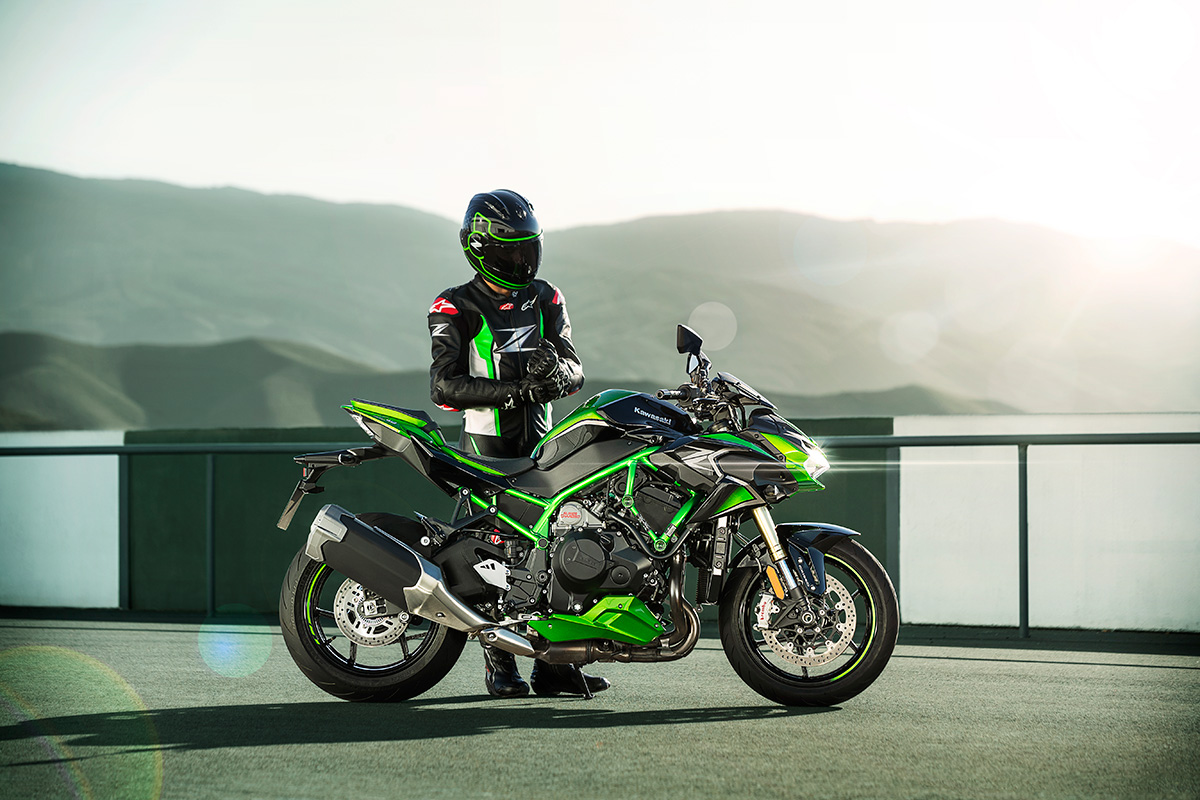
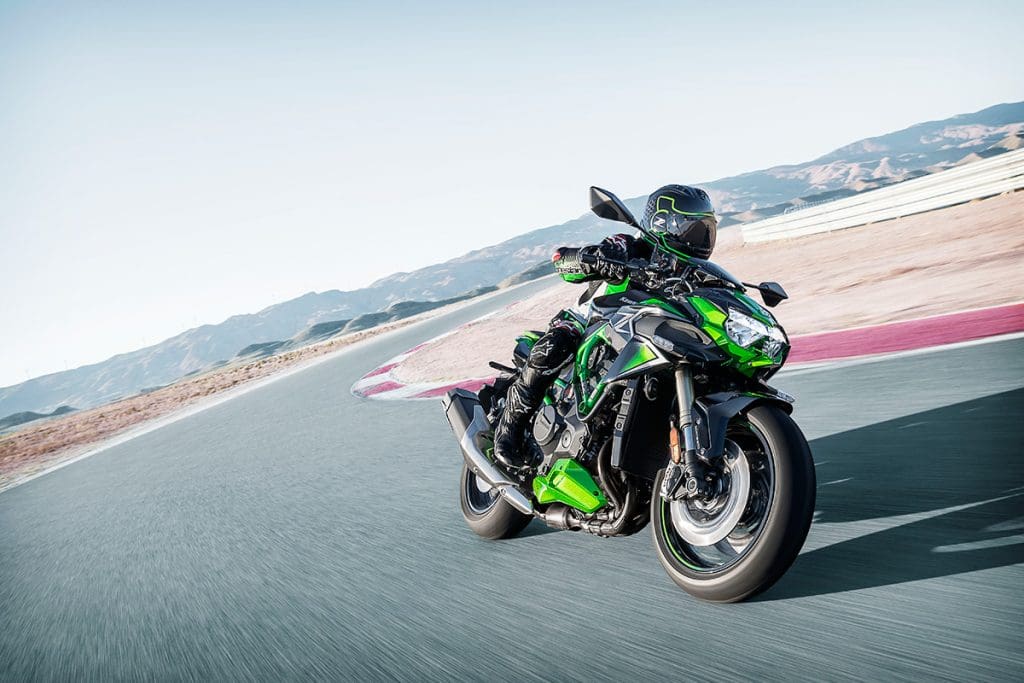
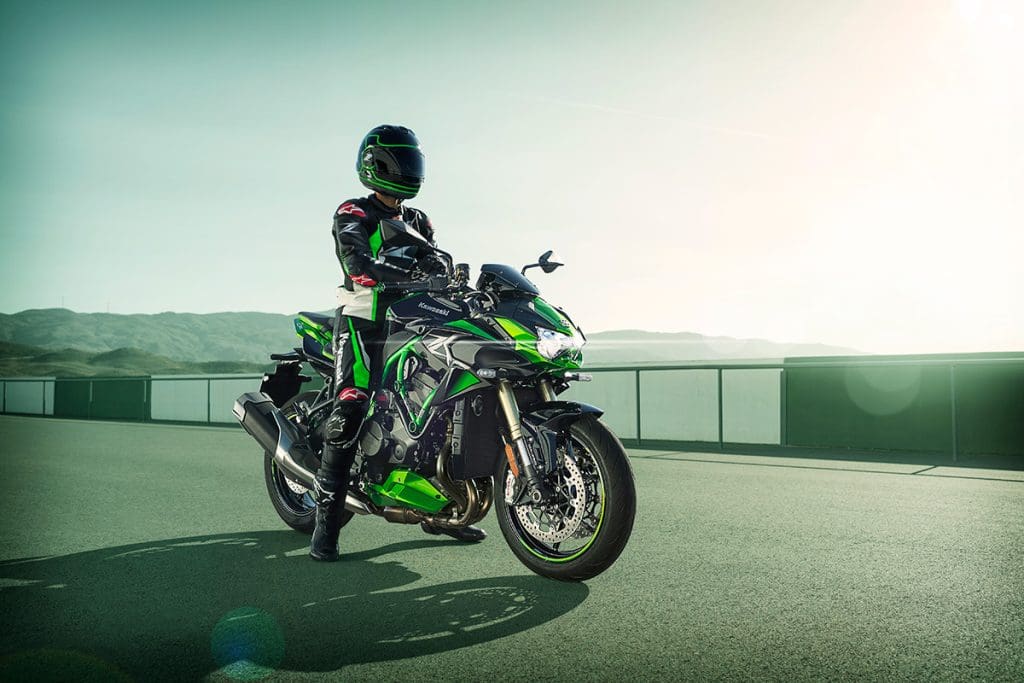
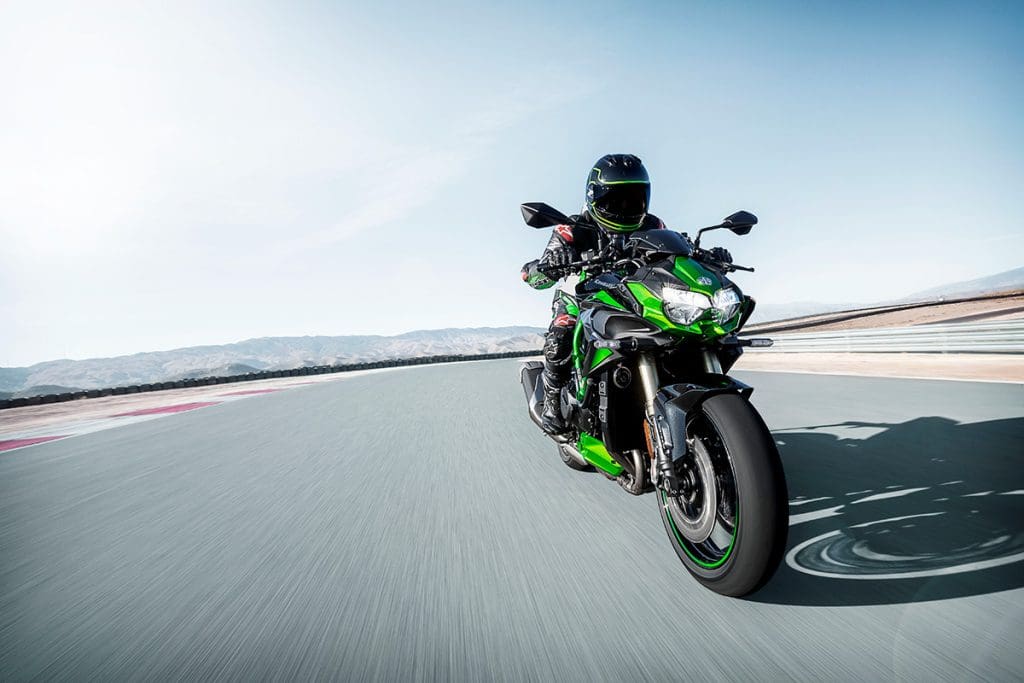


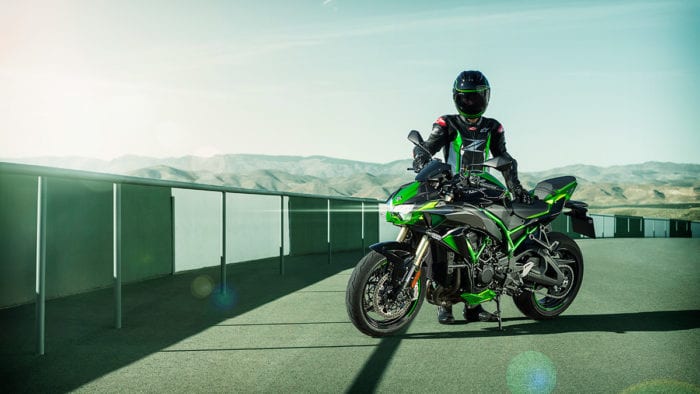
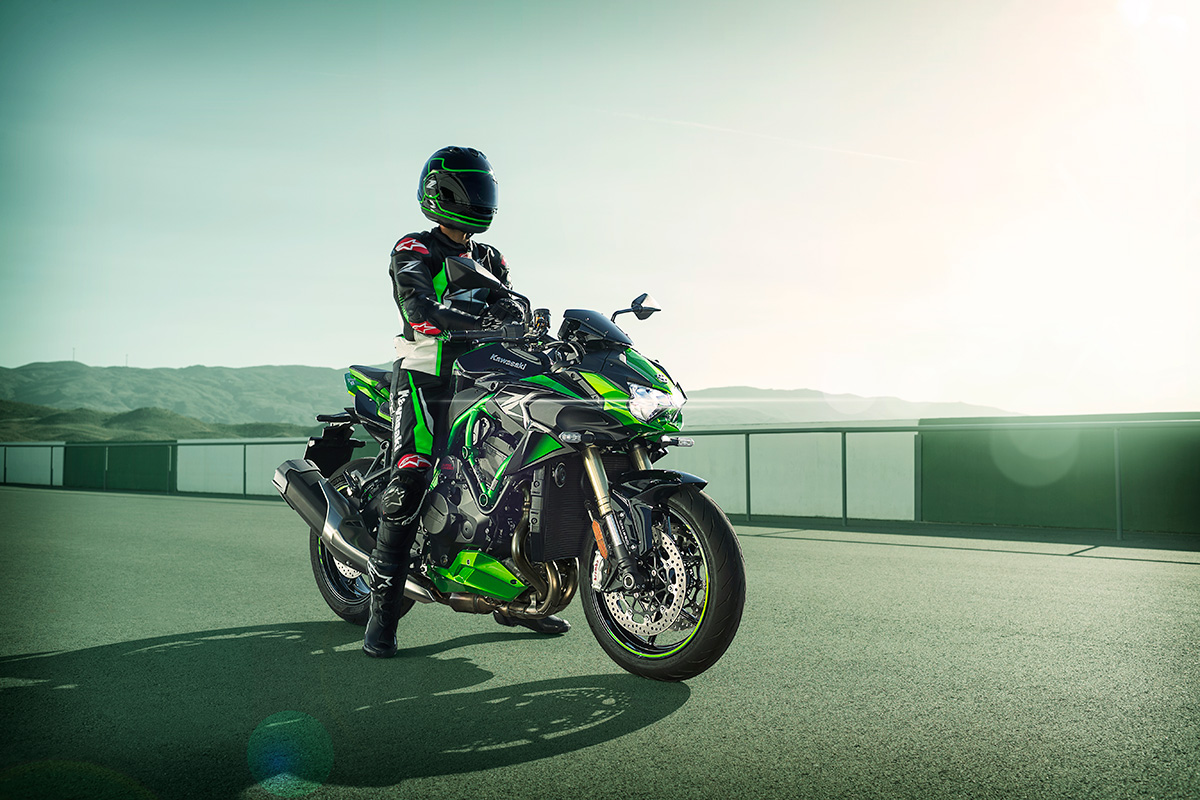
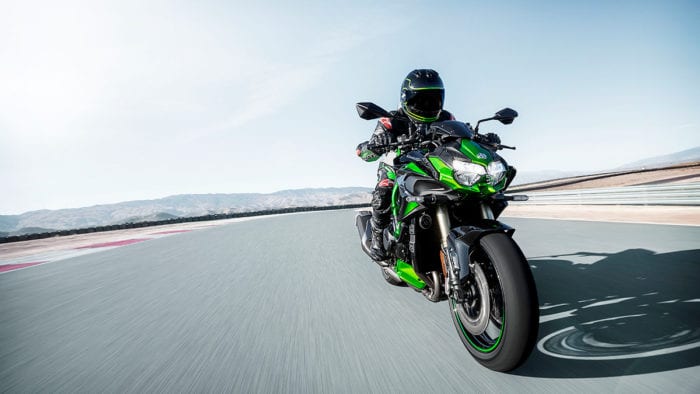

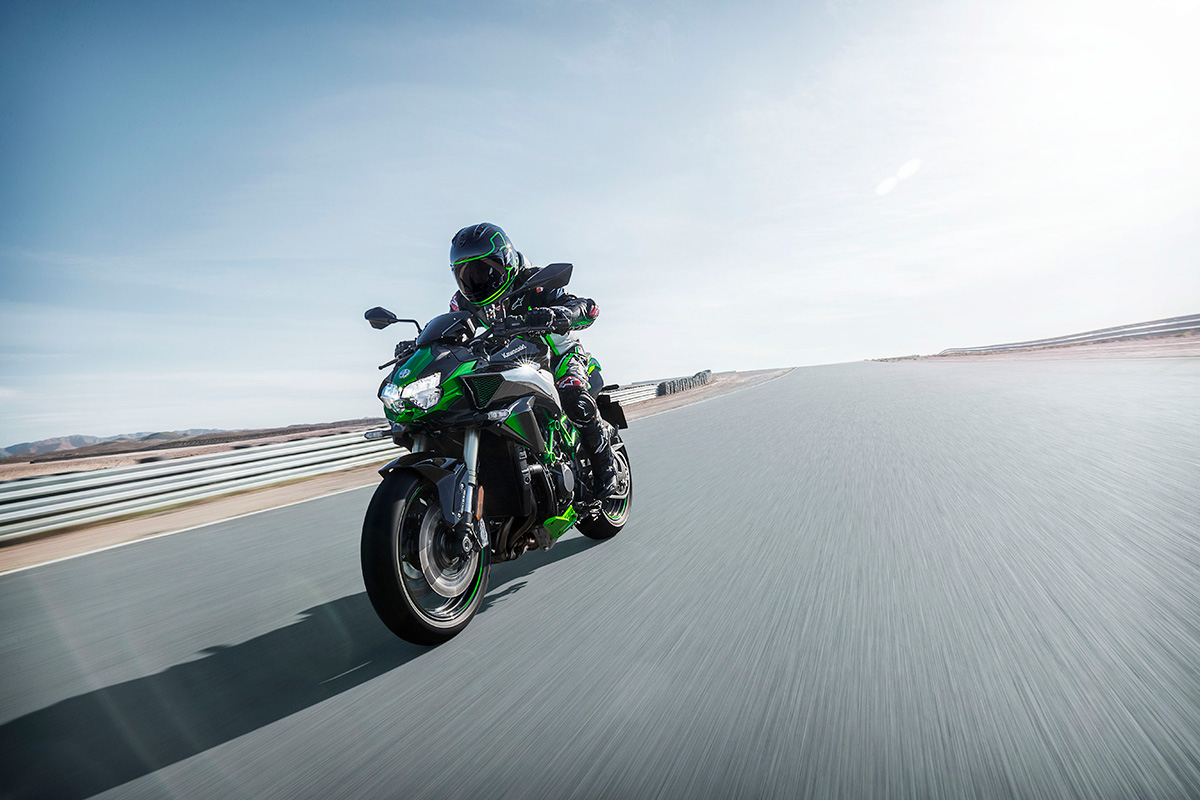
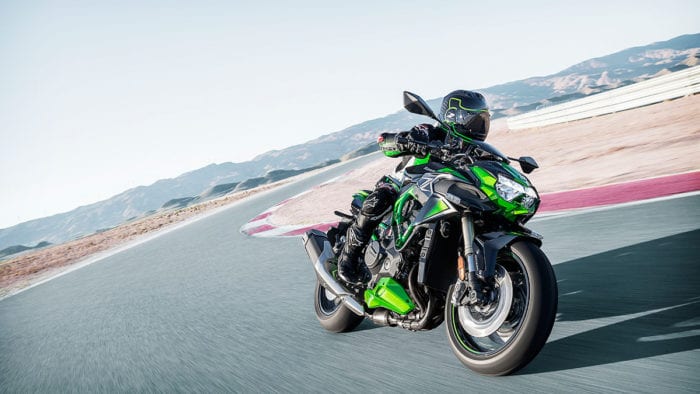
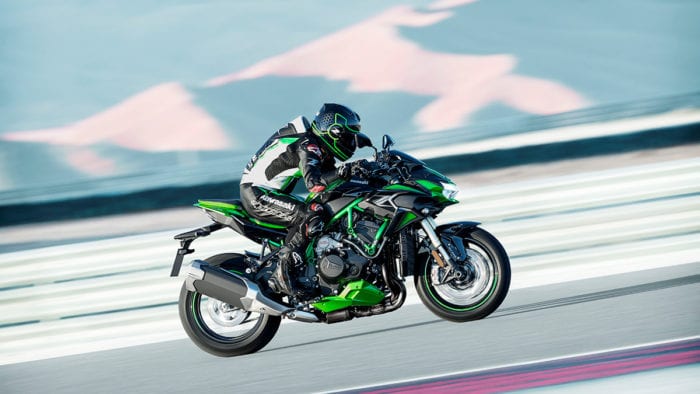
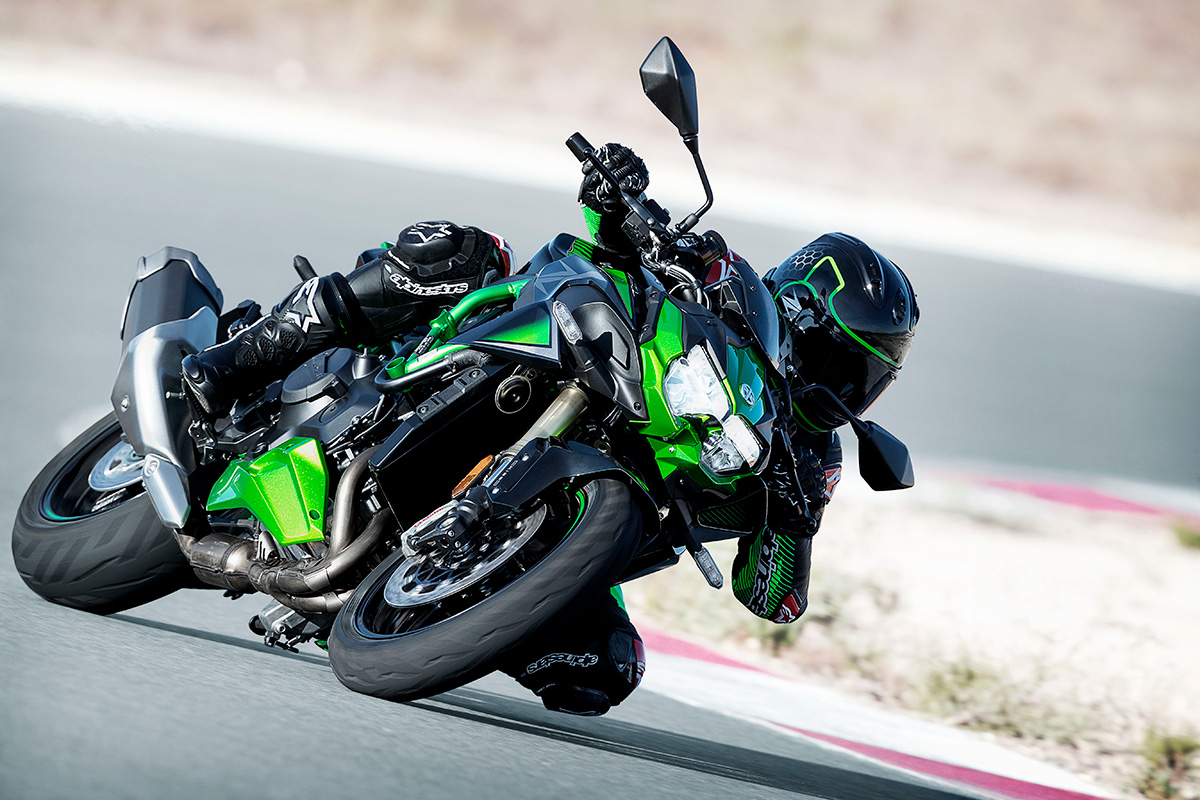

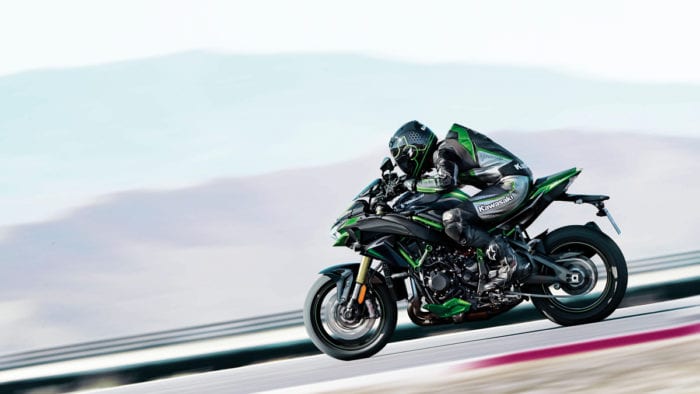
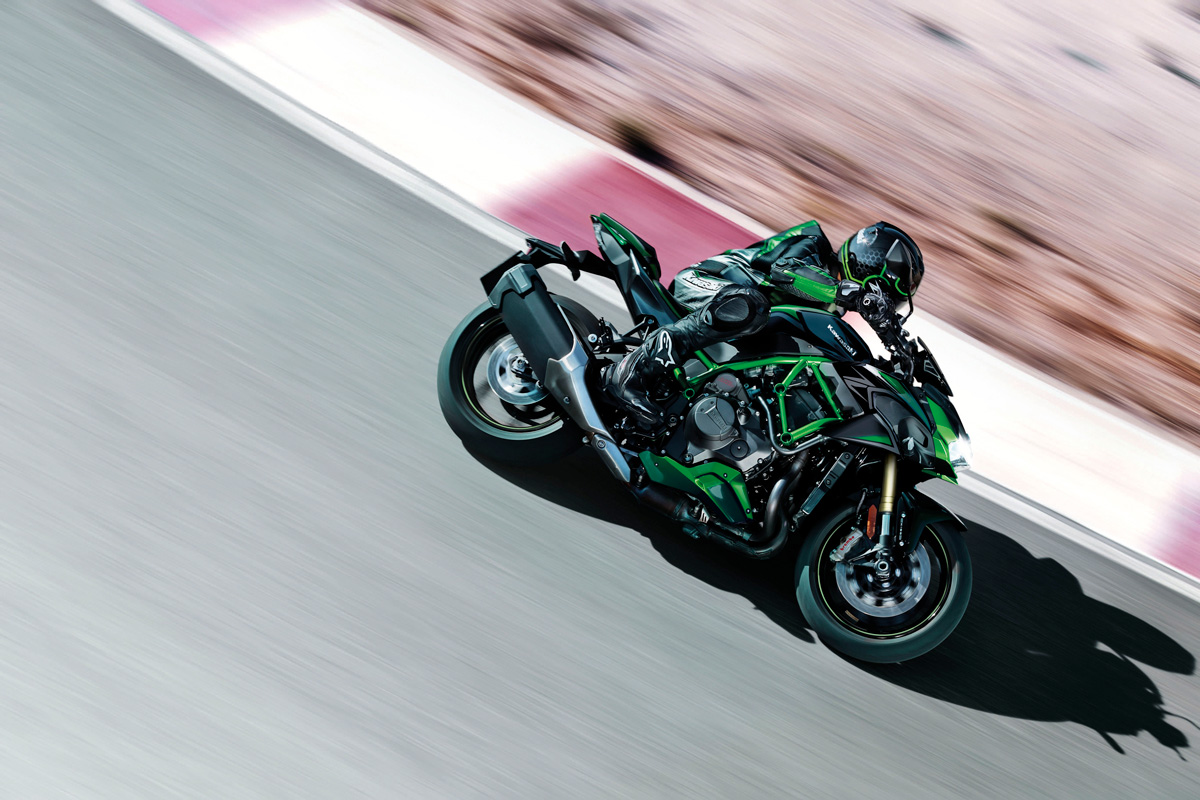

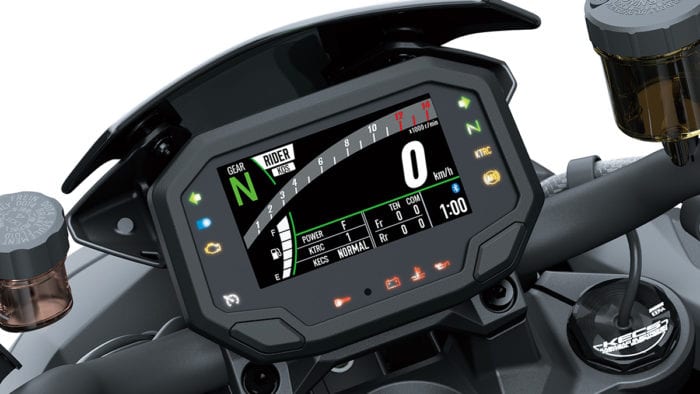
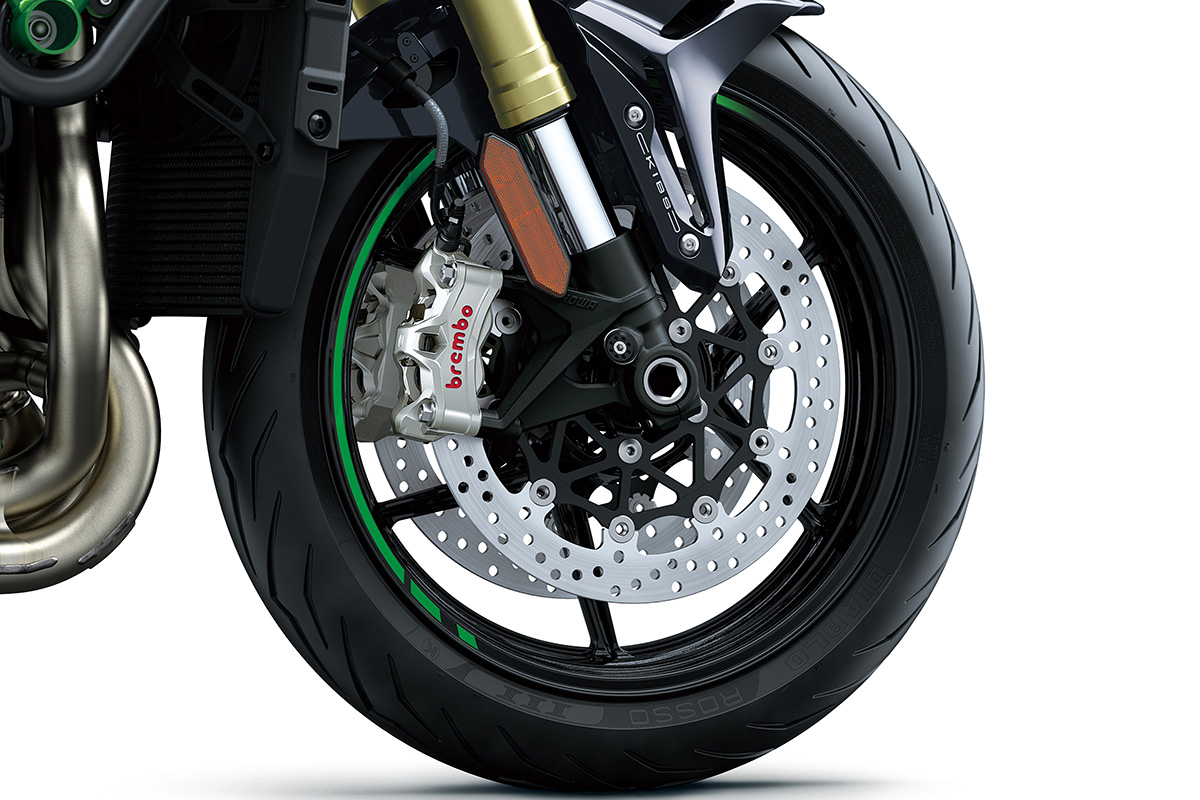
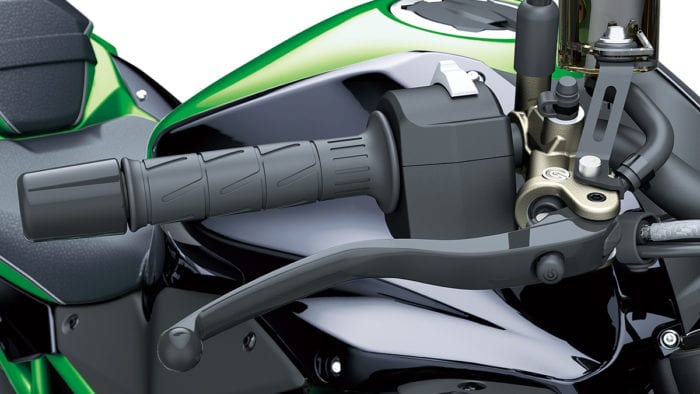
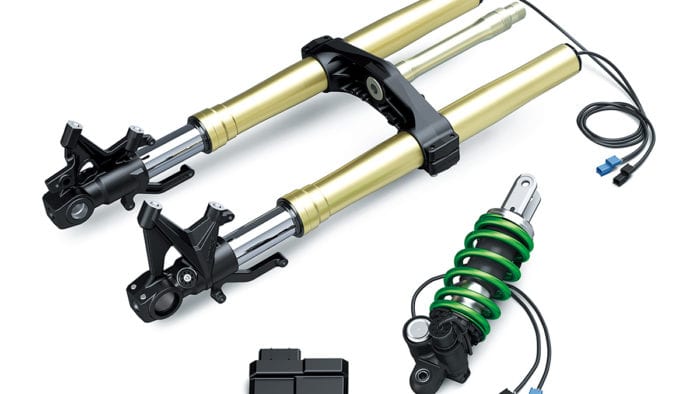
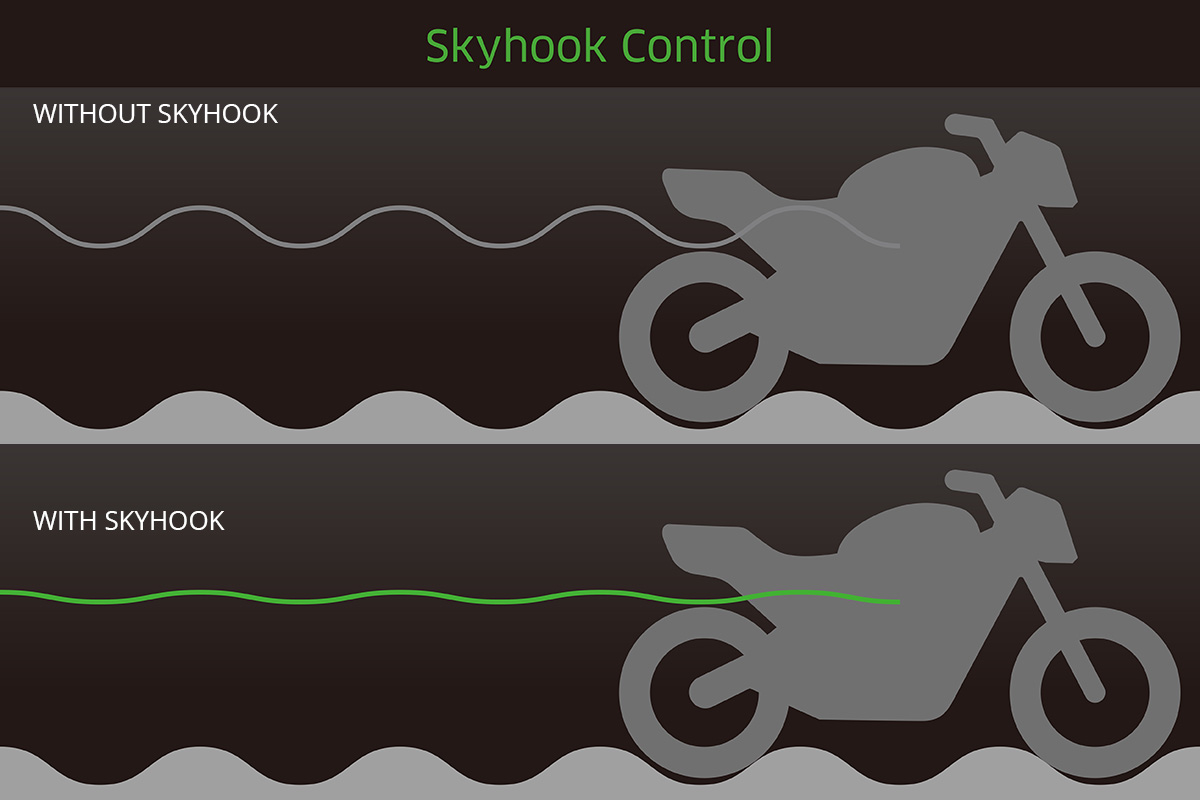

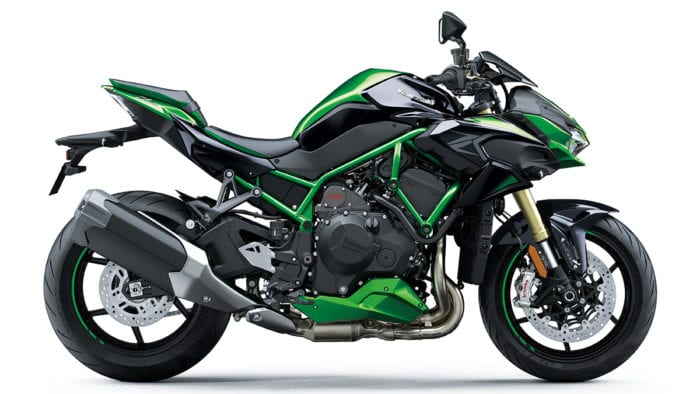

No Comment